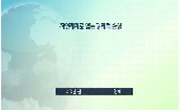본 연구에서는 18개 기후모형으로부터 도출된 SSP 기반의 미래 기후변화 시나리오와 유역모델링(SWAT-K)을 연계하여 제주도 지역의 미래 기후변화에 따른 수문학적 영향을 분석하였다. 기후모...
http://chineseinput.net/에서 pinyin(병음)방식으로 중국어를 변환할 수 있습니다.
변환된 중국어를 복사하여 사용하시면 됩니다.
- 中文 을 입력하시려면 zhongwen을 입력하시고 space를누르시면됩니다.
- 北京 을 입력하시려면 beijing을 입력하시고 space를 누르시면 됩니다.

CMIP6 기후변화 시나리오에 따른 제주도 지역의 미래 수문변화 전망 = Future hydrological changes in Jeju Island based on CMIP6 climate change scenarios
한글로보기https://www.riss.kr/link?id=A108848872
- 저자
- 발행기관
- 학술지명
- 권호사항
-
발행연도
2023
-
작성언어
Korean
-
주제어
Climate change ; SSP scenario ; GCM ; Jeju Island ; SWAT-K ; 기후변화 ; SSP 시나리오 ; GCM ; 제주도 ; SWAT-K
-
등재정보
KCI등재
-
자료형태
학술저널
-
수록면
737-749(13쪽)
- 제공처
- 소장기관
-
0
상세조회 -
0
다운로드
부가정보
국문 초록 (Abstract)
본 연구에서는 18개 기후모형으로부터 도출된 SSP 기반의 미래 기후변화 시나리오와 유역모델링(SWAT-K)을 연계하여 제주도 지역의 미래 기후변화에 따른 수문학적 영향을 분석하였다. 기후모형에 따른 편차가 있으나 대체로 미래 기온의 증가에 따라 증발산량이 증가하고, 강수량의 증가로 인해 유출량과 함양량 또한 크게 증가할 것으로 전망되었다. 특히 SSP5-8.5 시나리오에서 이러한 증가가 더욱 뚜렷하게 나타났으며, 미래 후반기로 갈수록 GCM 모형 간의 차이가 크게 나타났다. 연평균 값에 대한 과거기간(1981~2010년) 대비 증감률로는 미래 후반기(2071~2100년)에 SSP5-8.5 시나리오에서 강수량 +21.4%, 증발산량 +19.2%, 유출량 +40.9%, 함양량 +16.6%의 전망을 나타내었다. 월별로 변화율을 보면 SSP5-8.5 시나리오에서 강수량은 9월에 24.5%, 증발산량은 4월에 34.1%, 유출량은 10월에 58.1%, 함양량은 9월에 33.8%까지 증가할 것으로 전망되었다. 또한 극한 기후 시나리오에 따른 전망을 위해, 미래에 최다 강수량을 예측한 CanESM5 모형과 최소 강수량을 예측한 ACCESS-ESM1-5 모형의 미래 기후자료를 사용하여 연평균 수문학적 변화를 비교하였다. 그 결과 강수량이 최대로 나타난 CanESM5 모형에서는 유출률과 함양률이 상대적으로 높게 나타난 반면, 강수량이 최저로 전망된 ACCESS-ESM1-5의 경우에는 증발산 비율이 높게 나타났다. 본 연구에서 적용한 기후변화 시나리오 기준으로 제주도 전체의 가용수자원은 증가한다고 전망할 수 있으나, 기후모형에 따라 계절별 지역별로 상이한 결과를 도출할 수 있기 때문에 가능한 다양한 시나리오를 활용한 종합적 분석과 대응방안이 필요하다고 생각된다.
다국어 초록 (Multilingual Abstract)
In this study, we analyzed the hydrological impacts of future climate change on Jeju Island using SSP-based climate change scenarios from 18 climate models and watershed modeling (SWAT-K). Despite discrepancies among climate models, we generally obser...
In this study, we analyzed the hydrological impacts of future climate change on Jeju Island using SSP-based climate change scenarios from 18 climate models and watershed modeling (SWAT-K). Despite discrepancies among climate models, we generally observed an increase in evapotranspiration due to rising future temperatures. Furthermore, a significant increase in runoff and recharge was noted due to increased precipitation. These increasing trends were particularly pronounced in the SSP5-8.5 scenario, and differences among GCM models became more significant in the late 21 century. When compared to the historical period (1981-2010), the projected changes for the far-future period (2071-2100) in the SSP5-8.5 scenario showed a 21.4% increase in precipitation, a 19.2% increase in evapotranspiration, a 40.9% increase in runoff, and a 16.6% increase in recharge on an annual average basis. On a monthly basis in the SSP5-8.5 scenario, precipitation was expected to increase by 24.5% in September, evapotranspiration by 34.1% in April, runoff by 58.1% in October, and recharge by 33.8% in September. To further assess projections based on extreme climate scenarios, we selected two models, CanESM5 and ACCESS-ESM1-5, which represented the maximum and minimum future precipitation forecasts, and compared the hydrological changes in the future scenarios. The results indicated that runoff and recharge rates were relatively higher in the CanESM5 model with the highest precipitation forecast, while evapotranspiration rates were higher in the ACCESS-ESM1-5 model with the lowest precipitation forecast. Based on the climate change scenarios used in this study, the overall available water resources on Jeju Island are more likely to increase. However, since results vary by season and region depending on the climate model and scenario, it is considered necessary to conduct a comprehensive analysis and develop response measures using various scenarios.
동일학술지(권/호) 다른 논문
-
이상기후대비 노후저수지 홍수 대응을 위한 사전방류 기술개발 및 평가
- 한국수자원학회
- 문수진
- 2023
- KCI등재
-
수온 변화에 따른 상수관망 내 수질반응계수 추정 및 월별 잔류염소농도 분포 변화 분석
- 한국수자원학회
- 정기문
- 2023
- KCI등재
-
다중분광광학센서를 활용한 농업가뭄의 토양수분-식생-이산화탄소 플럭스 관계 분석
- 한국수자원학회
- 서찬양
- 2023
- KCI등재
-
농업가뭄 모니터링을 위한 VIIRS 센서 지표산출물 적용성 분석
- 한국수자원학회
- 서찬양
- 2023
- KCI등재




 ScienceON
ScienceON






